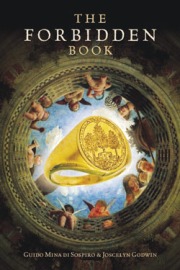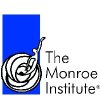 There’s a subtle power to sound, it goes straight to the brain and a skilled musician can motivate visions, emotions and even physical responses in their listeners. Alan Lomax’s book, The Land Where the Blues Began, has a great description of how the old blues players would work the crowd with their songs. By choosing music that fit what they needed, they’d get the audience into a rhythm and watch how they reacted to the music, when the time was right they’d sing lyrics that expressed what they wanted from the crowd, if it was money they’d sing about getting money, if it was food or drink they’d do the same, if they wanted someone to take home after the show, well it was just a matter of choosing the right song.
There’s a subtle power to sound, it goes straight to the brain and a skilled musician can motivate visions, emotions and even physical responses in their listeners. Alan Lomax’s book, The Land Where the Blues Began, has a great description of how the old blues players would work the crowd with their songs. By choosing music that fit what they needed, they’d get the audience into a rhythm and watch how they reacted to the music, when the time was right they’d sing lyrics that expressed what they wanted from the crowd, if it was money they’d sing about getting money, if it was food or drink they’d do the same, if they wanted someone to take home after the show, well it was just a matter of choosing the right song.
Speculative Exomusicology
While doing research for an Alarm Magazine article on “Audible Color” I had the opportunity to speak with Professor William Sethares of the University of Wisconsin at Madison. Sethares studies acoustical engineering and has spent a number of years looking at how sound is interpreted by the listener.
One of the interesting things to come out of this study is his idea of speculative exomusicology, a thought experiment that looks to recreate music from outside the Earth. This concept helps Sethares move past traditional boundaries of musical structure and allows him free reign to play with the mathematical underpinnings of tone, harmony and timbre themselves.
Immediately I think of Sun Ra and his Afro-Futurist explorations of Egyptian magic, idealized Africa and the Celestial Spaces. Talking to Sethares was an opportunity to better understand the ability to build structures and landscapes with sound and to open up new spaces through music.
Landscapes of Sound
Looking at the Swans upcoming album the same can be applied to what Michael Gira has been doing. The vocals seem to drift in this landscape of sound. He looks at sound in a very physical way, and builds up layers of aural expression as one might layer stone on stone to build a wall. If you go back through the Swans catalog you can hear this interesting development of visceral sound experimentation. In his solo work, and his work with The Angels of Light, he was able to really explore the art of song-craft. On My Father Will Guide Me Up a Rope to Heaven he brings it all together with powerful results.
Jhonn Balance and Peter Christopherson of Coil used their idea of sidereal sounds to build transcelestial landscapes with their music, Medieval polyphony excites images of harmony and utopian ideals, and singers like Rene Zosso bring alive the Troubadours’ highly visual music. The more I think about it, the more I start seeing the same in most artists who have truly mastered their medium. This is especially true when you look at traditional music from around the world.
Knowledge of sound’s ability to build images in the mind, and create landscapes that one can travel through, seems to only be missing in the lowest forms of pop music. Most serious musicians are adept at utilizing this, spiritual movements have taken advantage of this power to bring glimpses of theophanic visions to the believer, and national movements have built idealized dreams of their nation-states on songs.
Possibilities
An hour or so on the phone with Professor Sethares and my mind was racing with the possibilities. Even in the visual arts the same mastery of the medium is possible. Austin Osman Spare was able to achieve this effect with his subtle use of color and ephemeral line work. Talented writers and poets do it with words. Ezra Pound’s poem Sestina Altaforte has a good example of the recognition of this process, with Pound declaring at the beginnig:
En Bertans de Born. Dante Alighieri put this man in hell for that he was a stirrer up of strife. Eccovi! Judge ye! Have I dug him up again?
Here we have Pound pointing to the power of words to resurrect the dead. The duration of the reanimation would seem dependent on the artists ability to create a lasting work to carry the intention.
__________________
Integrating Sound and Image
Another enlightening exchange that came from the research was an email interview with Bryan Michael of Alka. He discussed the interplay between sound and image, and the process of integrating the two during a performance.
According to Bryan “the idea of both the visual and musical elements being conceived at the same time seems important. The trick is finding someone that can interpret and translate the tones into viewable elements without them being typical screenplay-style interpretations of the emotions evoked.” Having experienced this myself during the production process and live exhibits of A Serious Inquiry into the Vulgar Notion of Nature it was very helpful to hear how he tackled the ups and downs of the process.
alka :: i am a wreck live @ GATE in Philadelphia
This combination provides an interesting area of investigation. Sound itself is capable of so much, combined with visual elements of the same caliber and you get something like Stravinsky and Roerich’s presentation of the Rite of Spring. How can we translate this in contemporary terms?
Learning more about Brian’s interest in Gematria and Pythagorean musical ideas also opened up areas that I wasn’t very familiar with. “The idea of reducing words and incantations to their numerical equivalency and plugging the data into sequencers for audible results” is something that he is working with more. It seems like an idea that has a number of applications across the artistic spectrum, and closely tied to the same techniques that allowed the old blues players to be so effective.
Planetshifter Magazine was kind enough to host the full interview with Bryan, so check it out and learn more about Sound and Incantation – Digital Art as Alchemy.
Broke Incantation
And on an end note – here’s my own Broke Incantation, the latest bit of dabbling I’ve done while experimenting with awkward home recordings:













